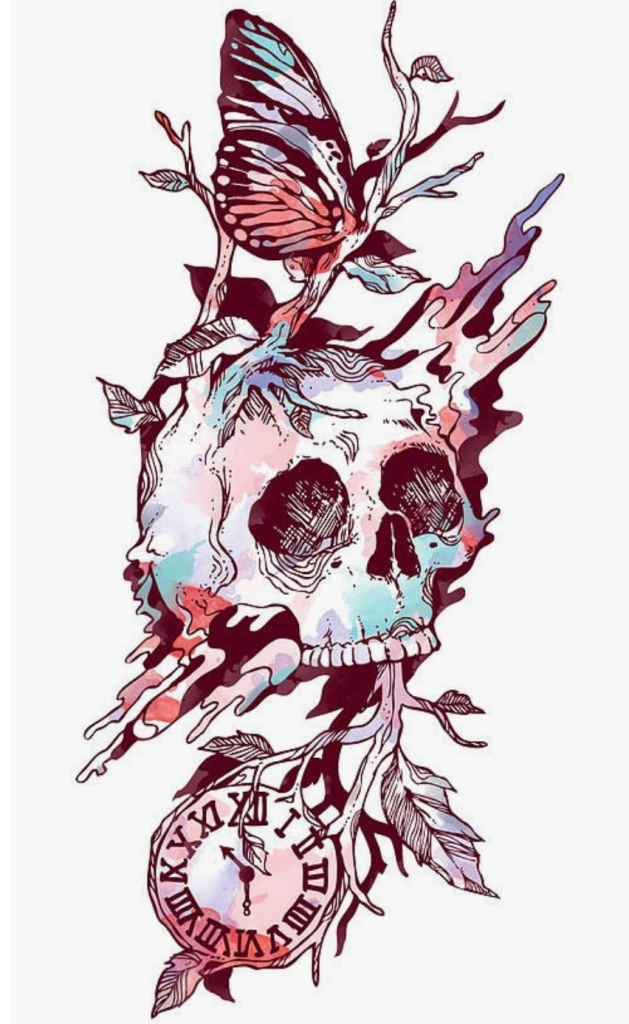Poem and post by HLTD50 student Peppermint_Lattes
Pain— is haphazard.
On a good day, I feel unrestrained from my body.
Like the halcyon ocean, its tides are low, my body is tranquil and serene.
I am reminded by the beauty of nature.
I hear the distant squawks of seagulls, as they soar through the clear blue skies.
My skin tingles from the rays of the warm blazing sun.
The clear cold water rushes with blissful intensity over my feet.
I see, hope, beyond the ocean skyline.
My body feels, at home.
But pain— is haphazard.
Pain is hazard.
On a bad day, my body feels trapped like the captain of a tall ship on a stormy ocean.
Pain— is the lightning that strikes the ship’s vulnerable mast, repeatedly, without missing a beat.
Pain— are the turbulent waves that unforgivingly slam itself into the side of a ship, only, to leave it impaired.
Pain— is a force of nature.
Pain— remains undefeated.
Pain— is haphazard.
Pain becomes . . .
Influenced by my personal experience of pain, the goal for my digital story was to bring attention to my ongoing battle with chronic pain. I began the workshop (Ed’s note: in Week 10 our seminar partnered with Project Re*Vision to host a digital storytelling workshop at UTSC; more on that to come) with the challenge of describing my pain and finding the right phrases and words that would describe it directly, but I soon came to realize that there were no right words to describe it, so instead, I turned to a metaphoric and symbolic representation of pain through the creation of a poem. During the free writing session, I miraculously brainstormed the most effective metaphor I could use to describe my pain and that was of thunder and nature—unpredictable yet aggressive. Then I had to think of a way of convey this metaphor that would communicate to my peers a subjective experience of chronic pain as vicious, and of course what better way to create this emotional response than to compare it with something that was completely the opposite: a bright sunny and happy day on the beach.
And so my poem begins with analyzing what a pain free day feels like to me: “On a good day I feel unrestrained from my body.”A pain free day is one in which I can physically and mentally move freely without any physical restrictions or intrusive thoughts about my illness. The poem is then followed by generic descriptions of a beach “Like the halcyon ocean, its tides are low, my body is tranquil and serene… I hear the distant squawks of seagulls as they soar through the clear blue skies.” The point of this generic description of the sea, and seagulls squawking in the sky is to let audiences draw upon a familiar and relatable experience of the visual and auditory experience of the scene itself—everyone knows how tides and seagulls sound like. The poem then goes on to describe the bodily experience of the beach, “My skin tingles from the rays of the warm blazing sun, the clear cold water rushes with blissful intensity over my feet.” Such descriptions are also pretty generic for the same reason—familiarity. The last sentence of the first section ends with “I see, hope, beyond the ocean skyline.” Even though hope in itself is a not a tangible item, the idea of being able to see it represents an optimistic mindset. I then describe my body as a familiar entity, “My body feels, at home.” Here, my body is tied to the concept of home and its “cozy” feelings of baked cookies and soft blankets, but also works as a symbol for comfort and familiarity.
The second section of the poem begins with describing pain as haphazard—as something that strikes at random times– but this time, the tables have turned and it’s not a sunny bright day on the beach, but as a hazard experience in the ocean. I begin with the description of a what a day with pain feels like, “My body feels trapped like the captain of a tall ship on a stormy ocean.” In this passage, the goal was to illustrate my body as one that embodies the captain on a tall ship trying to wrestle the brutal nature of pain— exhausting and strenuous. I then describe the experience of pain as an embodiment of the brutish nature of a thunderstorm, “Pain, is the lightning that strikes the ship’s vulnerable mast, repeatedly, without missing a beat. Pain, are the turbulent waves the unforgivingly slam itself into the side of a ship, only, to leave it impaired.” Here, pain embodies lightning– powerful and merciless— as if it was an entity that ran rampant through my body, leaving it debilitated and immobilized; pain is described as the same force that is capable of crippling a ship’s mast or tearing the side of a ship apart. I finish the second portion of the poem by admitting defeat to pain, “Pain, is a force of nature. Pain, remains undefeated.” Just like nature, pain cannot be defeated— pain always finds a way to win.
Finally, I end off the poem with a vague phrase, “Pain, is haphazard. / Pain becomes…”, this ambiguous conclusion allows for audiences to interpret how their individual experiences of pain has affected their lives; for some, pain just becomes another part of life, and for others, pain may become the very reason to grab life by the balls.
-mic drop-
